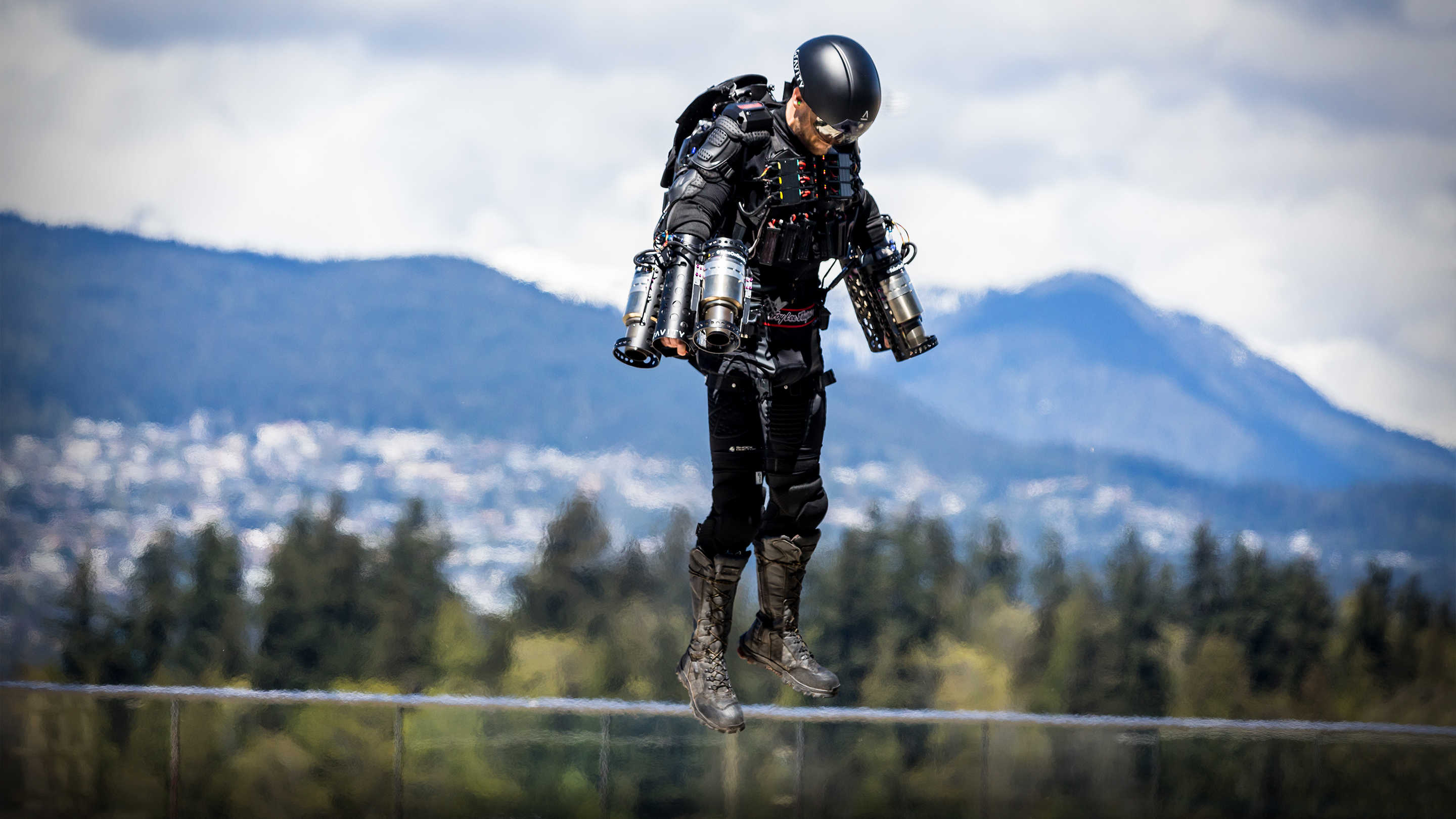Soldier Invents Suit That Lets You Fly Like Iron-man
Having an ‘Iron-man’ Flying Suit is a dream of every person. Most people find science fiction heroes very fascinating. But can you imagine such comic stories and flying heroes coming to the real world? It was recently reported that an ex-royal marine soldier invented a flying suit. This flying Suit can soar at 50 mph. It is also assumed that the flying suit might find its application during combat.
The British inventor, Mr. Richard Browning presented his futuristic flying suit. The ‘Iron-man’ flying suit was presented at the TED conference in Vancouver. He displayed the functionality of the flying suit in front of a large crowd. The Flying Suit is a sophisticated combination of technology with mind and body.
The British Ministry Of Defence is taking a keen interest in this technical project. The Ministry perceive the flying suit as potential equipment for combat.

The flying suit operates on a new technical concept which needs six miniature jet engine. These jet engines are attached to a rigid body – exoskeleton around the arms and back.
The flying suit operates in an upward direction. It has a display screen to display the amount of fuel consumption. Mr. Browning worked on the flying suit after he was inspired by his father who was an aeronautical engineer.
The launch of the ‘Iron-man’ suit – Daedalus
Daedalus is the name of the Flying Suit as stated by the startup company, Gravity. The tech team at Gravity is grinding on the marketing and promotion of exclusive suit. The team is working hard to spread out awareness of this sophisticated equipment. Mr. Browning stated that the suit has the capability to fly up to 200 mph. The Flying Suit can soar for 10 minutes with an altitude of around a thousand feet. It is also reported that the suit is safer than riding a bike
Other Human Flight Backpack System
As Mr. Browning is discussing the future application of the ‘Flying Suit’. He also stated about its actual mechanism behind building this suit. Many other companies have already taken a step ahead in the same direction. One of the biggest examples is of NASA’s Jet propulsion Backpack is ‘Manned Maneuvering Unit’ or MMU. It was built with a sole purpose to help astronauts fly effortlessly through space. Also, there have been many other companies who have been working in this field such as Zapata. Zapata is a hydro-flyer company which has developed a jet-powered Flyboard Air. It is a personal aerial vehicle that has the capability to soar up to 10,000 feet in the sky.
The JetPack Aviation or JPA company is also working on their version of flying suit. They skillfully crafted out a VTOL (Vertical Take-Off and Landing) vehicle. The team presented a live demo of VTOL in New York around the Statue Of Liberty.
Along with these competitive companies, the Verticle Flight Society is also catching the momentum. They are collaborating with specialized Universities to develop and design Verticle-Flight-Landing Vehicle.
Conclusion
With great zeal and enthusiasm, we observed the development of VTOL (Vertical Take Off and Landing) vehicles and flying suits. But it is still not confirmed about the application of flying suits in the combat is workable or not. The technological advancement is getting us closer to the real ‘iron-man’ suit.

Boeing is the aerospace giant who has announced about the global competition – ‘Go Fly‘. The announcement was declared at the Aerospace Industry Conference in Texas. Boeing also stated about sponsoring the team of inventors, engineers, and students. The team with better ideas for designing a VTOL device would get the resources. The vehicle should be capable of carrying a single person 20 miles without any fuel or recharge need. The ‘Go Fly’ competition has 3 stages. The selected 10 teams would get prize money of $20,000 based on written technical specifications.
In the second stage, 4 teams would get $50,000 based on the prototypes and revised specifications. And in the final stage, Grand Prize of $1 million would be awarded to the live demo of the complete process.
With all said and done this project still has a long way to go. The project needs to find a real-world fit, where it could be used for productive work.
Comments
0 comments
